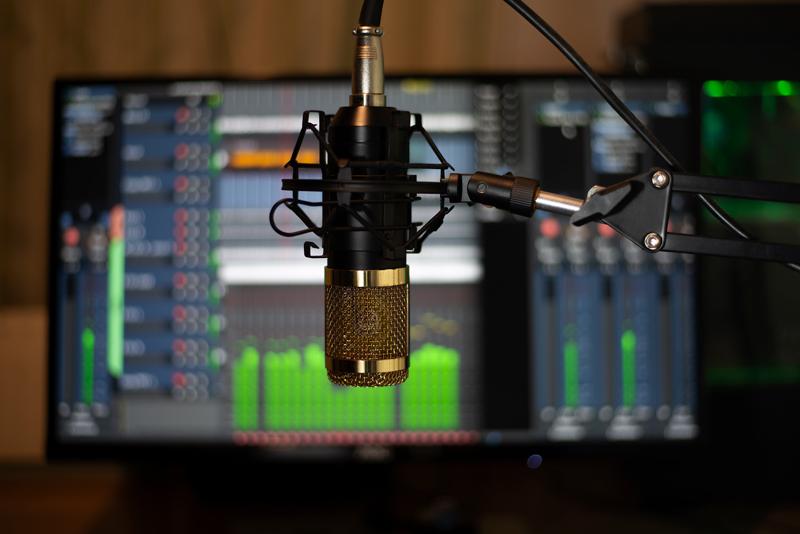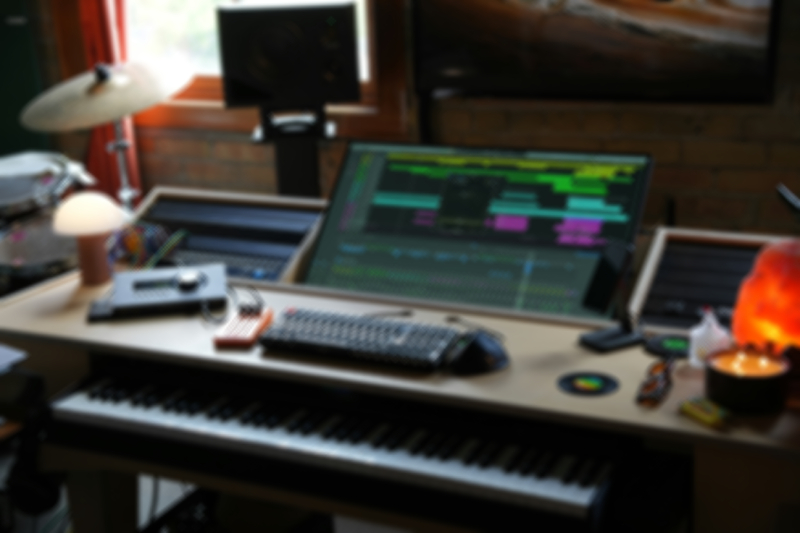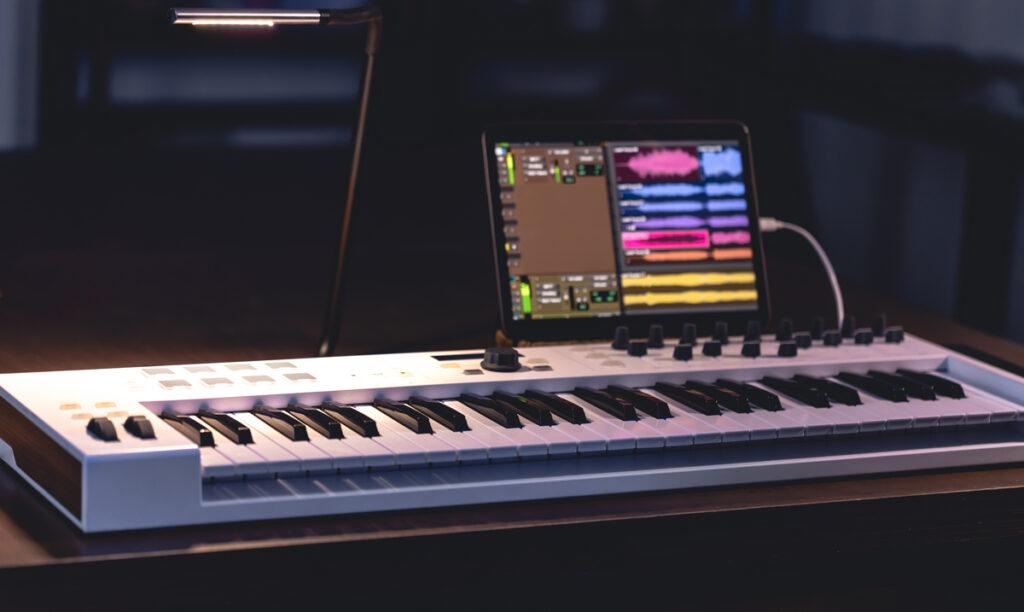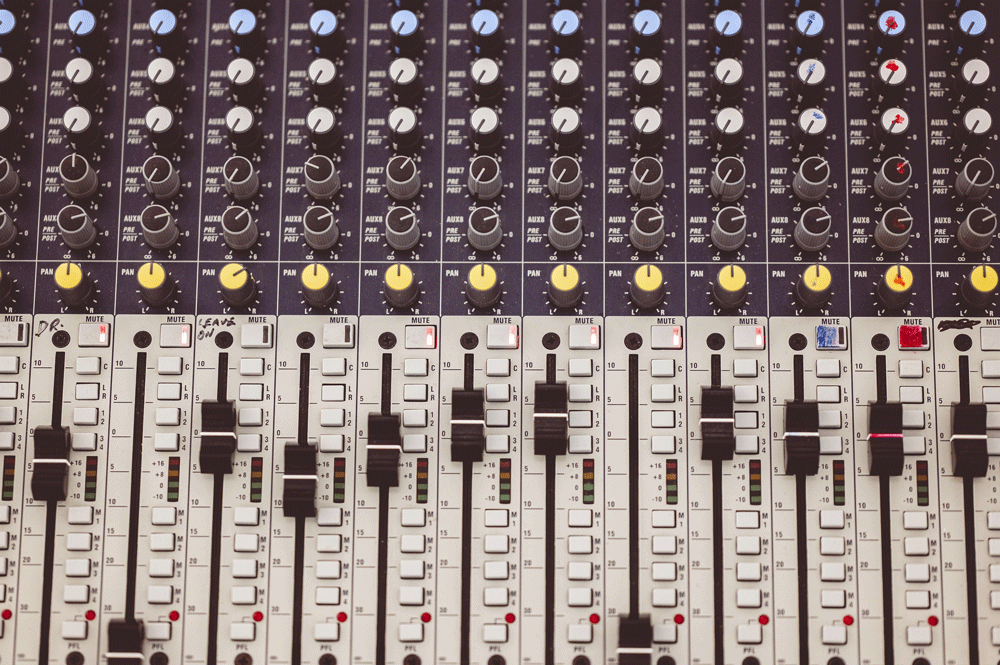Mastering for vinyl prepares the track for transferring to a vinyl disc as a physical carrier. Different physical carriers like vinyl, tape, or others have their restrictions for music.
This means that music with certain characteristics can not be recorded and reproduced on those mediums without mistakes. Physical carriers are in a way similar to streaming platforms, because they also have their standards and restrictions regarding the sound.
Mastering for vinyl means creating a separate master record that can be transferred to vinyl and then provide the perfect playback free from mechanical problems, with high quality of the sound, and without additional distortion.
How do you master a song for vinyl?
Generally, mastering for vinyl is very similar to mastering for streaming platforms, but, as we said, the rules are a bit different.
By the way, if you are not an expert in mastering in general, and want to learn more, you may also check out our article How to master a song, you’ll find a lot of useful information in it.
But now keep reading this article to learn about mastering particularly for vinyl.
It’s the task for a professional mastering engineer
Mastering for vinyl can not be done by an amateur. While mastering for digital carriers can be of any sound quality and still play back the same as your digital master, your vinyl record may reproduce the sound different from the master if the rules have not been considered. Therefore reaching out to a professional mastering engineer becomes even more important in case of a vinyl record.
In our mixing and mastering studio besides mixing and mastering for streaming platforms and CDs, we do professional mastering for vinyl. Despite the all-digital world, the demand for vinyl records is still high. People still love to be able to actually hold the music in their hands, and to listen to analog sound that creates special cozy atmosphere.
In our Major Mixing studio, we use high-end analog gear, and also DAWs and digital plugins for mastering. Records for vinyl also require using compressors, EQ, stereo enhancers to make the stereo field wider or, more often, to narrow it down.
How is mastering for vinyl different?
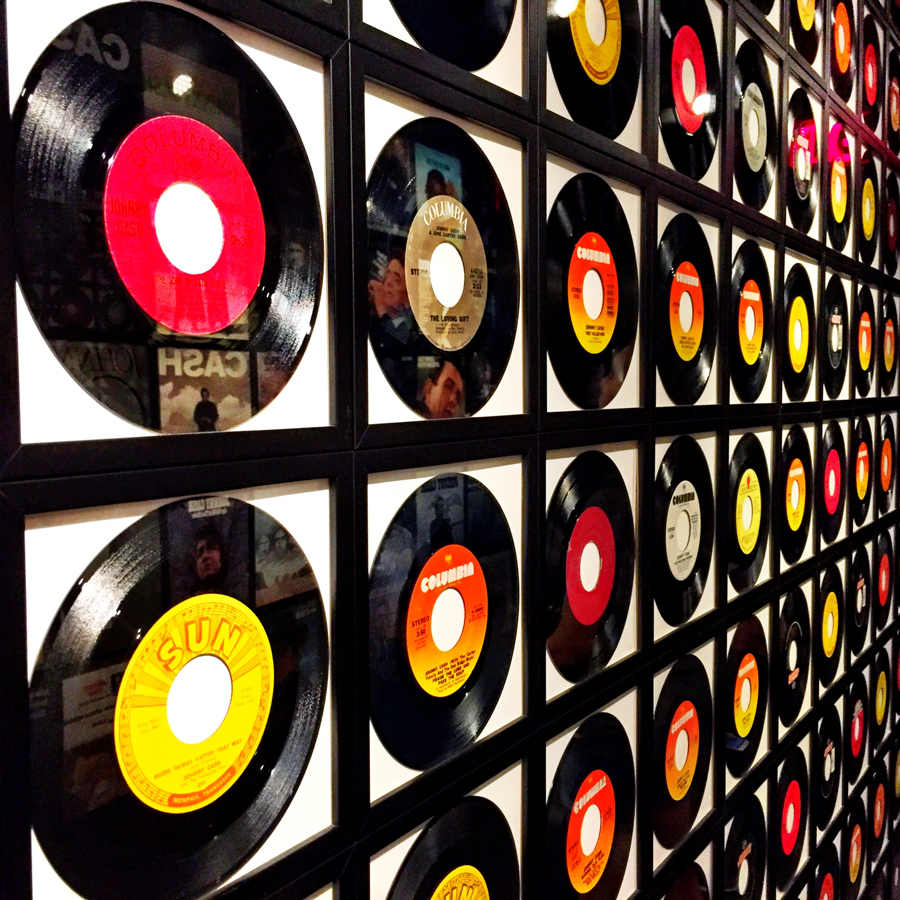 Preparing a record for cutting on vinyl is different from ordinary mastering for digital mediums and platforms because of the physical limitations.
Preparing a record for cutting on vinyl is different from ordinary mastering for digital mediums and platforms because of the physical limitations.
First of all, it’s different in many ways because with vinyl we are talking about analog medium. Analog nature of the carrier gives us perfect sound quality, we don’t have to care about sample rate or bit depth anymore, the music may be presented for cutting in the highest quality possible.
On the other hand, there are physical limitations that produce a number of restrictions and rules the music must follow in order to be perfect for transferring to a vinyl record.
Music, not prepared for vinyl and cut to the record while playback may cause
- needle skipping
- distorted sibilance, other unwanted sounds and various distortion
- bad overall sound quality
Let’s look closer at the specific requirements for vinyl.
Vinyl master vs digital master: why there are specific requirements
Why are there specific rules of mastering for vinyl record? Can’t we just record any sound using this medium? After all, it’s analog, so it should be more powerful and more accurate.
To understand the nature of the question we need to look closer at vinyl format, how the sound is recorded on vinyl, and the physical limitations. This analog medium is amazing because in a way, the actual sound wave is printed on vinyl creating the groove.
The sound wave is cut into the groove of a vinyl master (lacquer disc). The cutting device is called lathe, and it engraves the sound wave creating a spiral groove using the cutting stylus. Then this master disc is used in the manufacturing process to finally press the vinyl records with your songs.
When preparing for vinyl cutting, it’s important to understand the characteristics of high-frequency and low-frequency sound waves. A basic sound wave can be represented by a sine wave, where its amplitude corresponds to the sound’s loudness, and its frequency is determined by the wave’s length.

High-frequency waves have a shorter wavelength. Both stylus for cutting and the needle for playback need to trace this wave. When the sound is loud the wave gets high amplitude and it becomes extremely difficult, almost impossible for the stylus to cut its shape and for the needle to trace it later on. It results in a good amount of distortion and technical problems at the cutting stage.
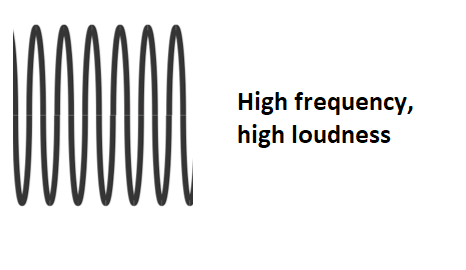
At the same time, if the low-frequency sound wave is too loud it could result in needle jumps as it gets the momentum running along the long curve. This causes needle skipping or getting out of the groove.

There are other difficulties with vinyl cutting and most of them are caused by the nature of the sound waves.
Phase issues between the left and right channels, sudden jumps in loudness, too much information in the Side channel compared to the Mid channel, especially with the low frequencies, all this, if not dealt with, may and will affect the quality of the vinyl record.
Now we’ll look closer at these properties and restrictions of mastering for a vinyl record.
Frequency response
First of all, the history of all modern music is formed in the times of vinyl records and music tapes. And in a way, the high frequency and low frequency balance that we hear in songs today is inherited from vinyl records, but still it’s not exactly what vinyl cutting requires.
As the music went away from physical carriers and to the digital, its standards changed. Particularly, digital masters became heavily compressed usually with a brickwall limiting, and contains loud and heavy low frequencies. This picture is not suitable for vinyl.
How to determine if the frequency response of the record is perfect for vinyl? In short, the track must be well balanced, not too bright, and without aggressive low frequencies.
- High frequencies must be quieter. The untamed high frequencies cause sibilance and distortion.
- Low end shouldn’t jump out. Too much bass can cause the needle to jump out of the groove.
- It’s recommended to cut off the frequencies below 20-40Hz and higher than 15 000Hz approximately. Those extreme ends will not add anything to the music, but can cause distortion and other problems.
Mastering engineers know that often the frequency curve of a good master for vinyl is similar to the curve of a pink noise. Comparing these EQ curves can help to get decent frequency response for vinyl, but not in every case. However, professional engineers know how a master for vinyl should sound and can determine by listening if the frequency response of the mix is good for transferring to vinyl or not.
Dynamic range
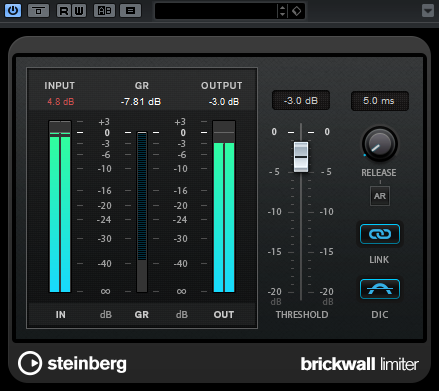 The dynamic range for vinyl has a lot of restrictions compared to modern music. The brickwall limiter that is popular now on streaming platforms is absolutely not suitable for vinyl. Heavily compressed digital master will sound terrible on vinyl and may cause the needle to skip.
The dynamic range for vinyl has a lot of restrictions compared to modern music. The brickwall limiter that is popular now on streaming platforms is absolutely not suitable for vinyl. Heavily compressed digital master will sound terrible on vinyl and may cause the needle to skip.
The master for vinyl must be dynamic but without quick, abrupt transitions from quiet to loud sounds. Those jumps will be the reason for the needle skipping.
Creating the dynamics suitable for vinyl, the audio engineer uses gentle compression.
High-quality vinyl recordings can be used as a reference to determine the needed dynamic range, however, a professional engineer listening to the record would know if the dynamics is suitable for vinyl or not.
Stereo image
First of all, the low end must be in mono up to 150Hz, leaving nothing in the Side channel for those frequencies, this is an important rule. Otherwise there might be issues with the needle skipping the groove.
For vinyl we don’t master too wide, on the contrary, the engineer will try to narrow the mix down a bit more than usual.
Wide stereo, especially in the lower frequencies, tends to have phase issues, which cause problems while cutting the groove, that is why it’s useful to bring more information back to the Mid channel.
Limiters
Limiters are not used in mastering for vinyl at all. The exception may be a slight saturation, to gently cut off individual short peaks.
The gain reduction which we usually apply to digital masters will not do any good here, this is one of the main differences of digital masters and vinyl cutting.
Sibilance control
We already talked about high frequencies and how they must be tamed for vinyl cutting. Special attention in this case deserves sibilance formed by music or vocal.
Sibilance contains loud high frequencies usually coming from the range of 5kHz to 10kHz, but they can also appear higher in the spectrum. Sibilance is often caused by the vocal pronouncing sibilant sounds such as s, z, sh, ch, and similar ones, but also can be produced by instrumental parts.
As sibilance contains excessive high-frequency information, it causes distortion on the vinyl record while cutting. To deal with it, mastering engineers use de-essing and also may work directly with the frequencies responsible for the sibilance. De-essing is more important for vinyl cutting than for creating a digital master, because in digital music moderate sibilance is not a problem and is often present in the record.
How loud should you master for vinyl?
There is no standard loudness level a vinyl master must reach. The engineer should pay more attention to the dynamic range, to the difference between the loud and quiet parts. You don’t master for vinyl record too loud, as you would master for streaming platforms.
How loud the songs will be is the choice that is made at the stage of the vinyl record cutting by the vinyl cutting engineer. The point is that the louder the record, the wider is the groove. The space on the vinyl record is limited, that is why the less tracks you want to fit to the record, the louder they can be recorded. However, if many tracks need to be fit to one side, the loudness options become restricted.
The optimal solution is to master the tracks at about -12 dB RMS. After that, the cutting engineer will adjust the loudness if needed according to the requirements of the medium.
Want a free test mix of your track?
We get it.
That’s why we’ll do a full hybrid (analog + digital) mix of your song —
for free.
No upfront payment. No risk.
You only pay if you’re blown away. And if you are, we’ll slash 40% off the final price.
Nobody else in mixing and mastering offers this.
Why?
Because most studios say yes to every project. We don’t. We only mix what we’re excited about — so send us your best track. If we like it, we’ll mix it like it’s going to the Grammys.
👉 Just drop your name and email to get started.
Mastering an album for vinyl record
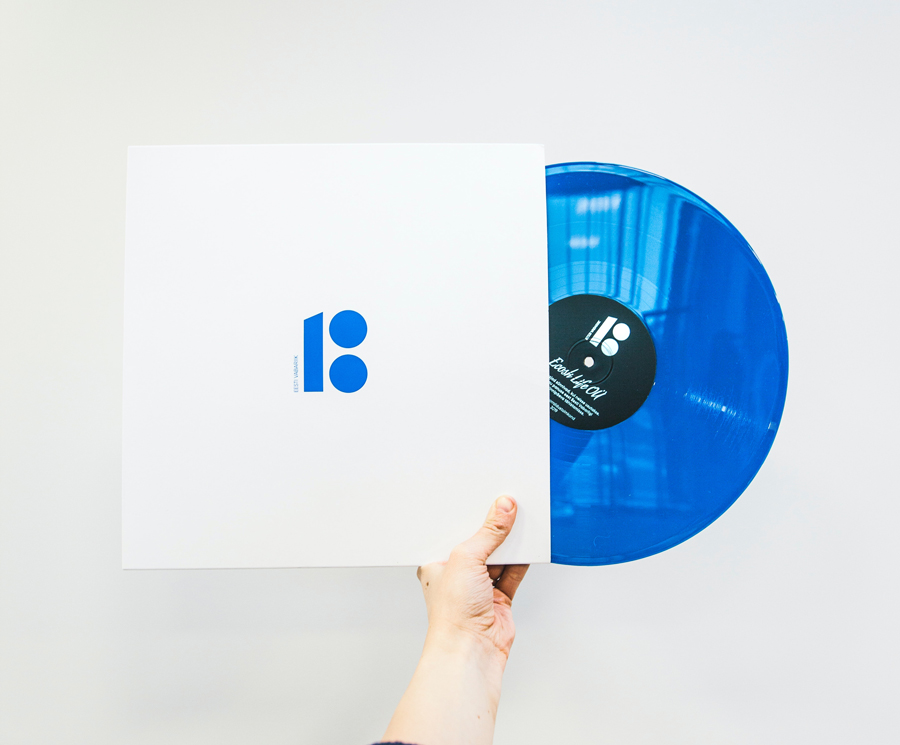 While playing a record on a turntable for 33 1/3 RPM (revolutions per minute) or 45 RPM the needle covers longer distance per full turn in the beginning of the record and shorter distance when running closer to the center of the record.
While playing a record on a turntable for 33 1/3 RPM (revolutions per minute) or 45 RPM the needle covers longer distance per full turn in the beginning of the record and shorter distance when running closer to the center of the record.
This means that you have the longest groove distance available per each second of your song in the beginning of the record. And then gradually it gets shorter and shorter as the music plays and the needle proceeds towards the center of the record. For the last song on a side you may have almost two times less groove distance per second compared to that of the first song.
So, the closer to the center of the record the groove gets, the more jammed the information on the vinyl record becomes. That is why, the best quality of the recording and playback, especially concerning the high frequencies, you will receive in the beginning of each side.
For this reason, slower ballads with less dynamic range and less high-frequency information usually conclude each side of the vinyl record, while dynamic and more energetic songs make a great start for each side.
The sound engineer should create the album sequence according to this specifics of the medium. However, each album is a story itself and the sequence of the songs is meaningful and crucial for creating the listening experience. You can’t just sequence an album based on technical specifics of the medium.
At the same time, creating the sequence you have to remember to place roughly the same time of music to each side. One side’s recordings on the vinyl record should be of the similar total time as the recordings on the other side.
The professional engineer together with the artist must determine the solution. The sequence of the songs on each side of the vinyl record must create the coherent sequence and united impression on the listener, and the same time taking into account the physics of the vinyl record.
Can you use a CD master for vinyl?
Sometimes you can use CD digital master for vinyl, but often the frequency response and other characteristics are not suitable for placing on vinyl right away.
Though they are both discs, obviously, these mediums are extremely different. A CD carries digital information, while on a vinyl record the actual sound wave is pressed, it’s the analog format.
What we can say for sure is that you definitely need to check all the parameters of the CD digital master before sending it for vinyl cutting. Most often you would find that the digital master is not fit for vinyl and should be remastered.
And moreover, it is even worse to try to create a vinyl record using actual music CD as the source, because some of the sound quality is lost while transferring to a lossy CD format. You need to remaster the song to make a good master for vinyl.
How much does it cost to master for vinyl?
Some studios charge more for mastering for vinyl than for regular mastering. But in our Major Mixing mixing and mastering studio mastering for vinyl costs the same as mastering for digital streaming platforms.
Among our services you can find mastering or a bundle of mixing and mastering offers. You’ll just have to make it clear in a comment with your order that you need mastering especially for vinyl.
All mastering engineers in our studio have many years of experience in mixing and mastering. They have worked on big industry projects including preparing records for vinyl medium and vinyl release.
We care for your success! You are welcome to write to us, place your order or ask any questions, we’ll be happy to help.






